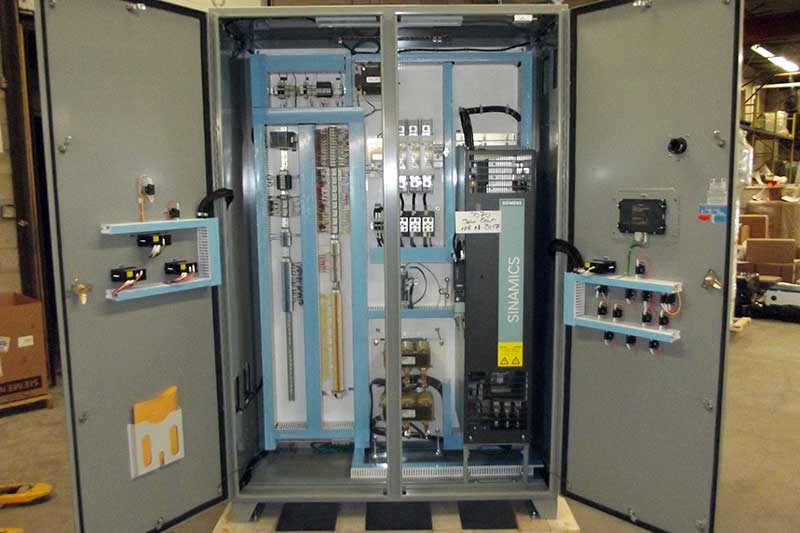
What are motor starter panels?
Motor starter panels are electrical control panels designed to start, stop, and control electric motors in various industrial and commercial applications. They play a crucial role in managing the operation of electric motors, ensuring safe and efficient functioning while protecting motors from damage and providing operator control.
A motor starter is designed to start motors based on their starting requirements and ratings, such as:
- High starting speed
- Low torque
- Slow starting speed
- High torque
- Combinations of the above or time variants based on the connected loads
What are the key components and functions of motor starter panels?
- Motor starters: Motor starters are used to control the power supply to electric motors. They can be of various types, including: direct online starters (DOL); stator resistance starters; rotor resistance or slip-ring motor starters; autotransformer starters; star delta starters; soft starters; and variable frequency drive (VFD).
- Overload protection: To prevent motors from overheating and getting damaged from excessive current draw, motor starter panels incorporate overload protection devices, such as thermal overload relays or electronic overload protection modules. These devices monitor the current flowing to the motor and trip the starter if it exceeds safe levels.
- Disconnect switches: Motor starter panels often include disconnect switches, which allow operators to manually disconnect power from the motor for maintenance and safety purposes.
- Control circuitry: The panels contain control circuitry that enables users to start, stop, and control the direction of motor rotation. Control elements may include pushbuttons, selector switches, and indicator lights. More advanced motor starter panels may also have programmable logic controllers (PLCs) for customized control logic.
- Protection relays: To protect motors from faults such as phase loss, phase imbalance, and voltage fluctuations, motor starter panels may include protection relays that monitor electrical parameters and trip the motor starter in case of abnormal conditions.
- Control transformers: Control transformers are used to step down voltage levels for control circuitry, providing the necessary low-voltage control signals while isolating the control circuit from the higher voltage used for the motor.
- Variable frequency drives (VFDs): In some motor starter panels, especially for larger motors, VFDs may be included to control motor speed and achieve energy efficiency and precise control of motor operations.
- Housings and enclosures: Motor starter panels are usually contained in enclosures to protect the components from environmental factors and physical damage. The type and rating of the enclosure depend on the specific application and location.
- Communication interfaces: Advanced motor starter panels may include communication interfaces to connect with other control systems, such as supervisory control and data acquisition (SCADA) systems or industrial networks, for remote monitoring and control.
Where are motor starter panels used?
Motor starter panels are widely used across a broad range of industries, including manufacturing, agriculture, mining, water treatment, and HVAC (heating, ventilation, and air conditioning). They ensure the safe and efficient operation of electric motors, providing control, protection, and the ability to customize motor behavior to suit specific operational requirements.
CCP motor starter panels
CCP has built virtually every type and size of motor starter panel—for motors from ½ HP to 500HP. Based on decades of experience, we can meet whatever motor starter panel requirement you might have.